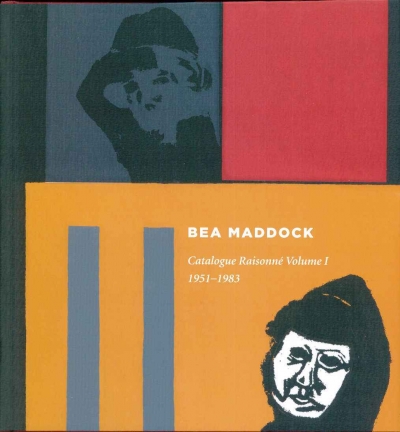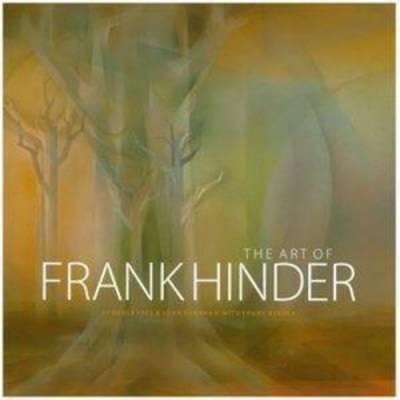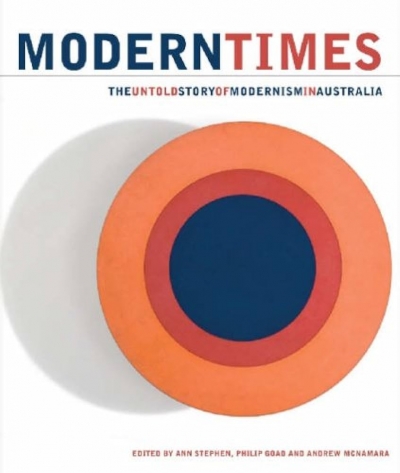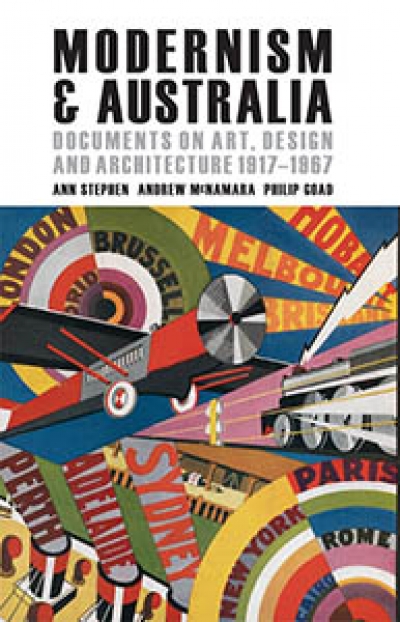'MODERN TIMES constantly challenges the reader to consider the nature of modernity and of modernism and its structure.’ Virginia Spate’s lucid preface to the volume articulates why this handsomely illustrated and well-researched book is such a ground-breaking history of Australian modernism. It acts as a companion volume to Modernism and Australia: Documents on Art Design and Architecture 1917–1967 (2007), which was an anthology of primary source documents including diaries, letters, talks and manifestos. These revealed Australia’s engagement with international modernist trends and the role of interior and fashion design in developing modernist principles. These developments occurred despite the Australian conservative government’s opposition to them, particularly when it came to the area of fine arts practice. Modern Times is aimed at a broader readership than its predecessor and is connected with a touring exhibition on show at Sydney’s Powerhouse Museum until 15 February 2009. The book includes twenty-five articles written by academics, artists and curators from a range of different disciplines, including visual art, design, architecture, animation, fashion, popular culture, film and photography. These articles are divided into five themes that cover abstraction, the body, the city, space age, and electric signs and spectacles.
...
(read more)




